A layered border: San Diego-Tijuana, NPN Mid-Year Meeting 2019
October 17, 2019 • 5 minute read

by Daniela Lieja Quintanar
Curator, Los Angeles Contemporary Exhibitions (LACE)
I have crossed the U.S./Mexican border between San Diego and Tijuana many times since I moved to Los Angeles from Mexico City six years ago. The experience of crossing from one place to another, marked by a profound wound on the land, shakes my body and my spirit every time.
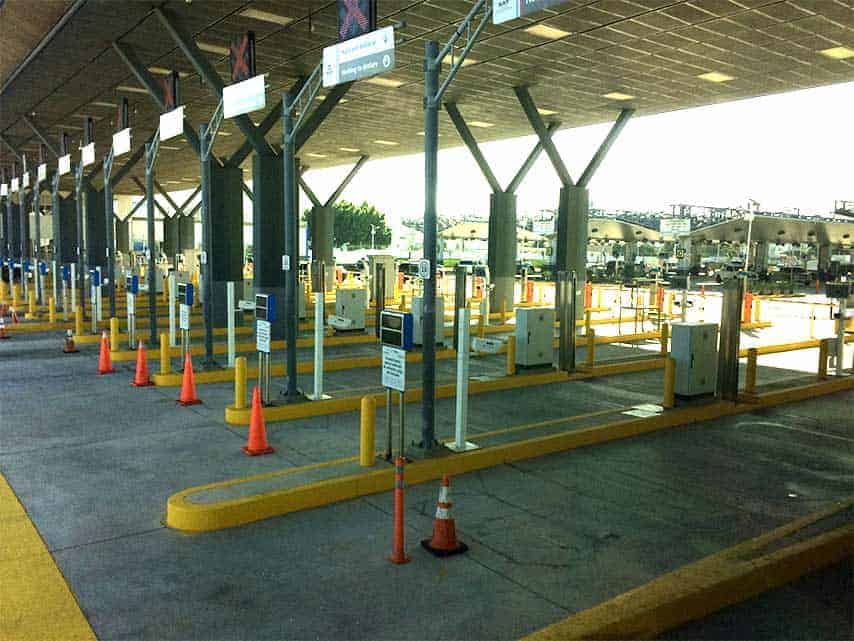
Twenty miles from the border, our first gathering for the NPN Mid-Year Meeting was in the bowels of San Diego, underneath the elevated freeways that connect different neighborhoods—a conjunction of arteries that holds a flux of vehicles on rough concrete. Below this massive structure the glorious Chicano Park breathes the resistance. The columns that sustain the freeways are hidden with astonishing Chicano murals from the 1970´s to the present. Standing on an inspired Mayan structure that faces the four cardinal directions, our guide artist and community member Mario Chacon speaks about the history of struggle. In 1970, the Latinx community organized against a government that constantly builds borders as obstacles to erase us. They came together to fight for a green area.
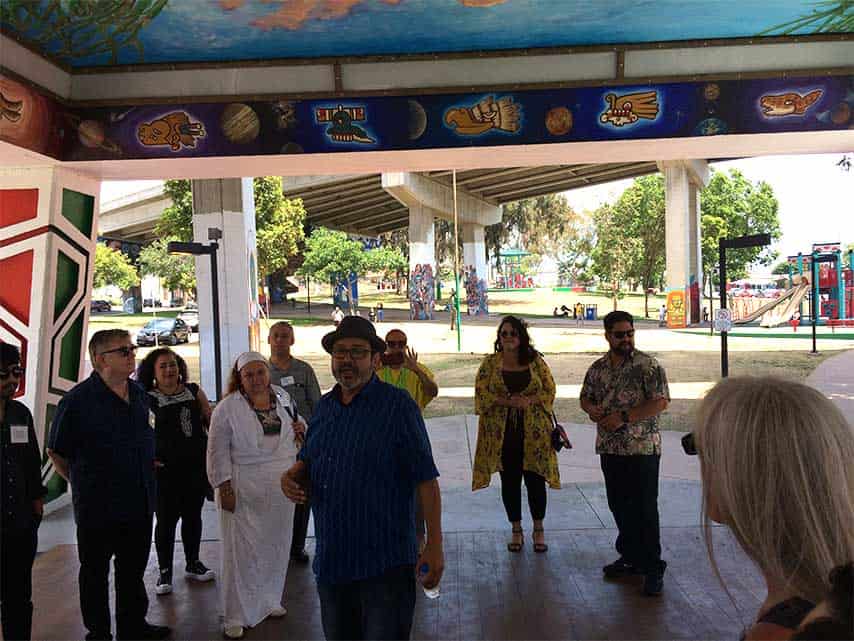
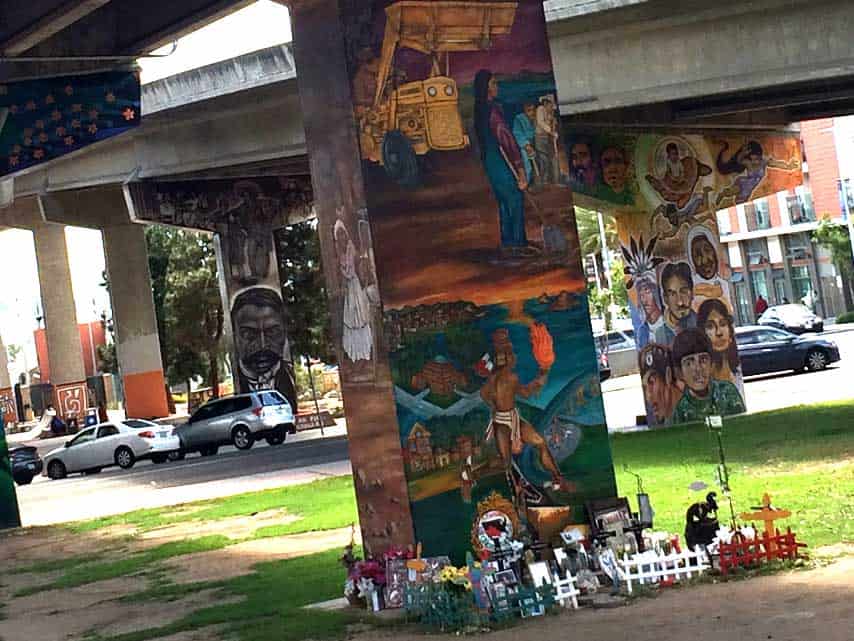
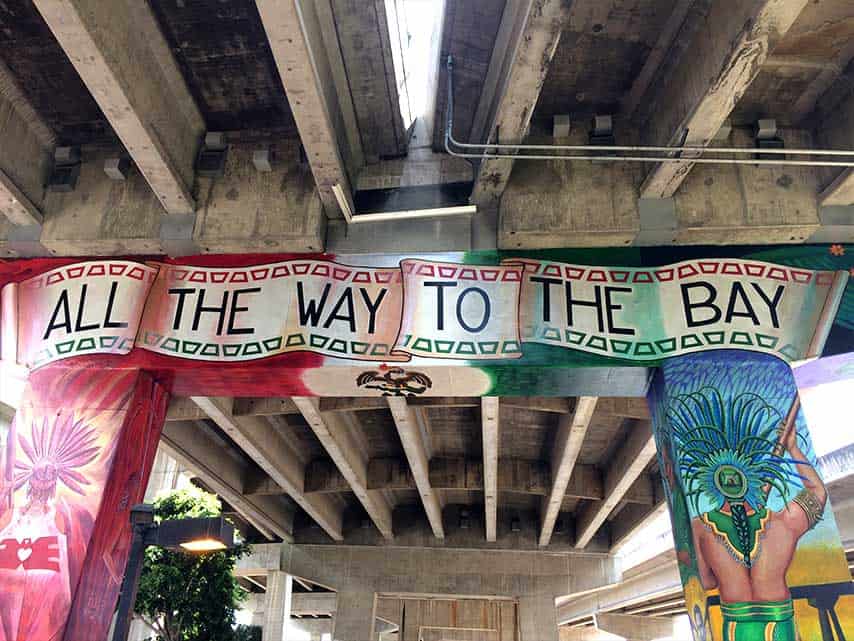
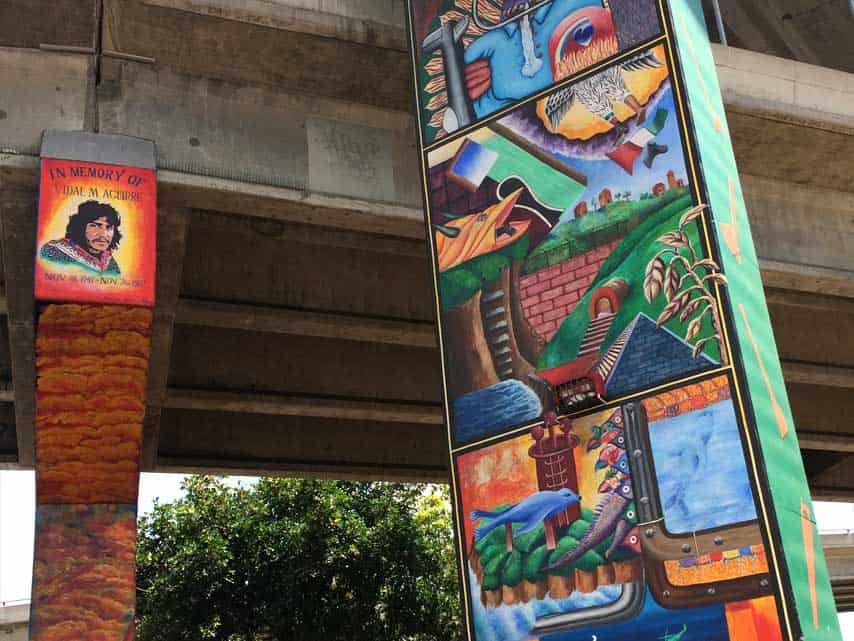
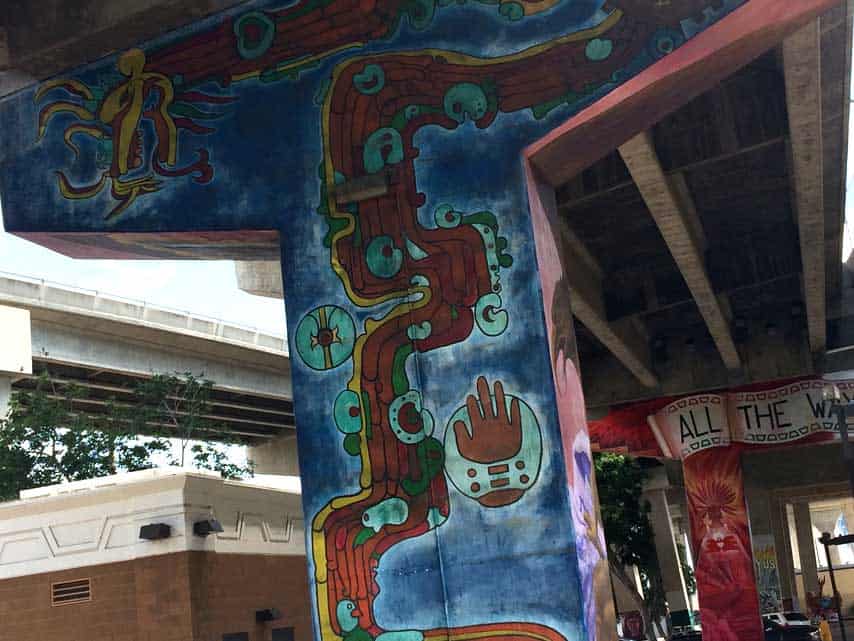
A walk inside the streets of Barrio Logan shows a new reality: a garden of cactus, medicinal and ritual herbs, a place for indigenous ceremonies, the modern sewing studio Sew Loka, a recently closed Chicano Art Gallery, and a bunch of new restaurants and galleries. Some of them work with the community.
The day closes with a performance by Women´s Revival Chorus and a complex panel with amazing border voices at Bread and Salt Gallery including: legendary artist Victor Ochoa who spoke about his long political artistic practice; Omar Pimienta, Tijuana artist and writer that delves into their everyday life border conditions; Andy Sturm artist, urban planner and Casa Familiar member: and Lourdes Lizardi Lopez who is a migrant rights activist working mainly independently in Tijuana.
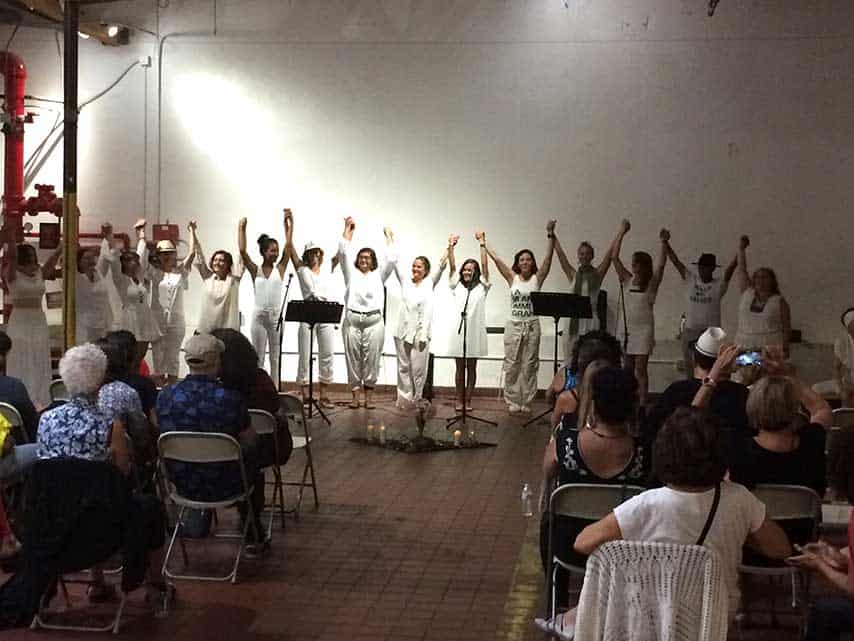
The dialogue with Lourdes was broken because there was no simultaneous interpretation provided. Language is definitely another layer of the border in this country. Language is a big challenge for art organizations, but is also a matter of understanding our cities as multilingual spaces, honoring the diverse diasporas that surround us. In our collective reflections, the idea of creating multilingual spaces was discussed, firstly committing to the diverse diasporas in our communities, and secondly, establishing a long term relationship with the countries that connect them. An international dialogue is also urgent to strengthen the arts and its impact on our society. From the standpoint of language justice, defined as the right to use the language that you feel the most comfortable to express yourself, it is imperative to demolish the language border inside art organizations. Though it is a challenge, there are alternatives from translating didactics, to having simultaneous interpretations, or having artworks in multiple languages. One of the main efforts towards language justice is to integrate POC and multilingual speakers in our organizational teams and audiences, as well as to think of this as a necessity in our budgets. While this administration continues adding physical, administrative, and psychological walls to the border, it gets more complex to logistically bring international artists, but is also a reason to collectively push back through our arts networks.
The next morning we crossed the border into Mexico and our first stop was at CECUT Centro Cultural Tijuana. Opened in 1982, CECUT is a federal cultural center that gathers history, theater, contemporary arts, and education. The modernist architecture in desert colors reminds us that the landscape underneath the city is the same land as on the U.S. side.
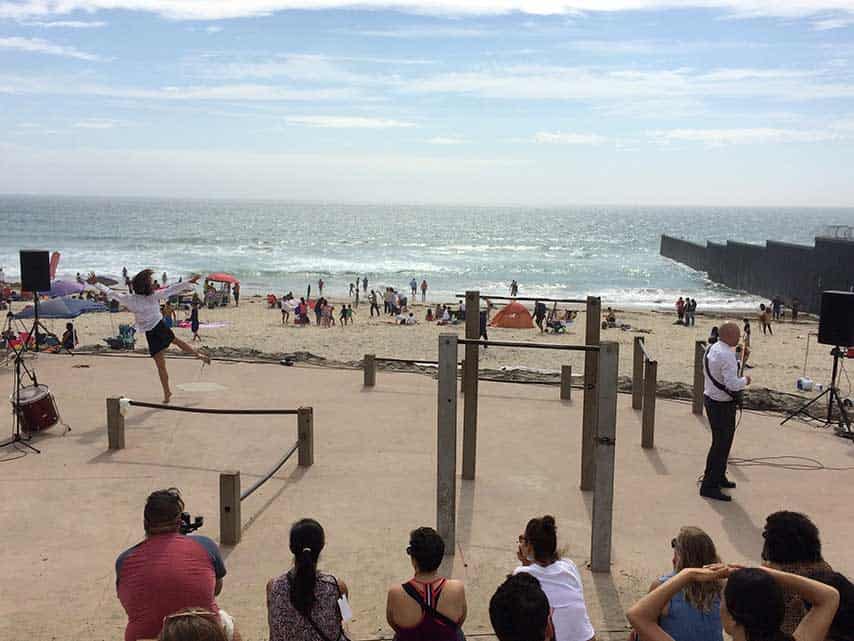
The next stop, and the most unforgettable in every visit to Tijuana, is at the actual physical border on the beach stretching into the ocean. On the side of Mexico, the city grows into the border, so it is loud, colorful, and alive. On the U.S. side, the militarization and the recent renovation of a new “peaceful” natural reserve is lonely and constantly under surveillance. Our group was fortunate to see art on the alive side, where thousands of people arrive to cross the border or come back from a country that aggressively and inhumanly expelled them.
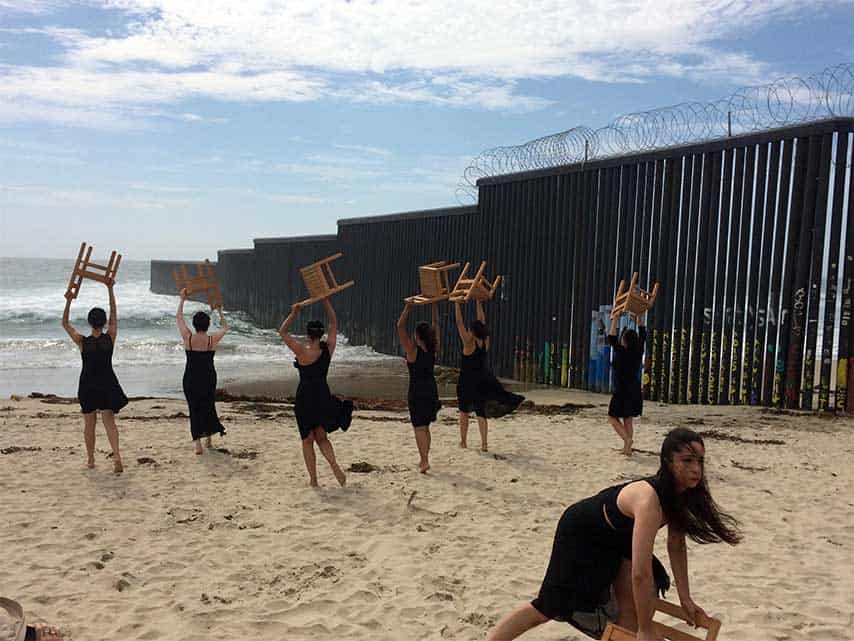
Inside the “Undocumented Café,” a place that offers free daily coffee to immigrants, activist and artist Gaba Cortes shared with us video documentaries of the everyday realities of people that are affected by the implications of the multiple layers of the border. There, where deported ex-Vietnam soldiers live in poor conditions, people from all over the world are waiting for asylum in a city that has to constantly readapt according to people’s movements and border politics. We had the opportunity to witness three courageous performances in front of the ocean, Mujeres en Ritual Danza Teatro, Ingrávita Danza, and Péndulo Cero Danza Contemporánea, with a blessing by Norma Meza indigenous activist from the Kumiai people from California (US/MEX) area.
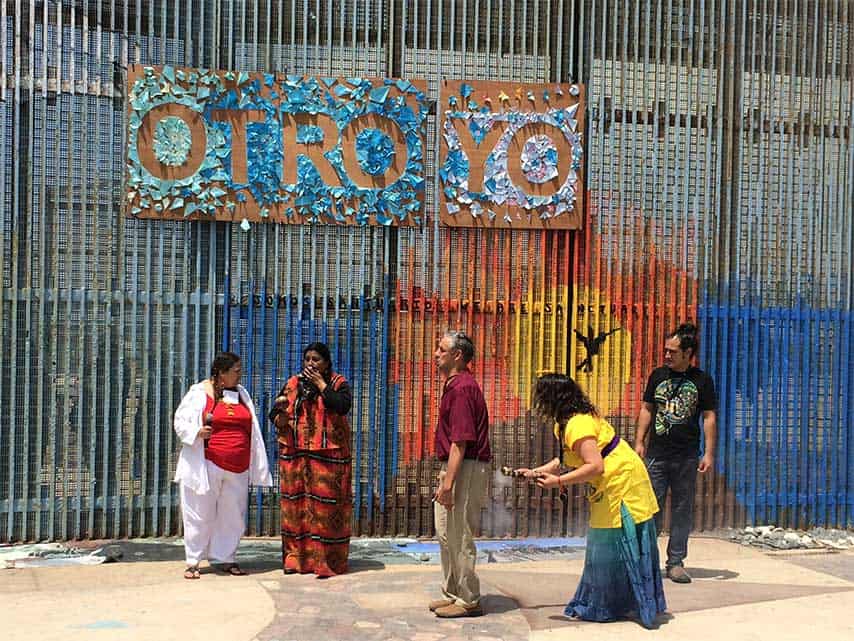
The body is the first territory of resistance, and seeing all these performers using their bodies as a vehicle of resilience confronting the physical representation of power that controls our existences, was memorable. There, with art, with dance, with music, with chants, other possibilities are open and need to be sustained by the collective network that we have through NPN and our own work inside each of our organizations. We are all committed to begin, and continue, dialogue with artists from Mexico, Central America, and other latitudes that are part of this land, including first peoples.